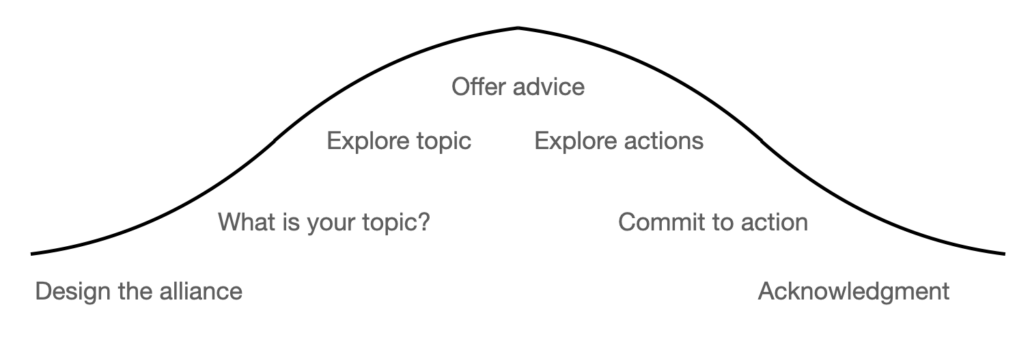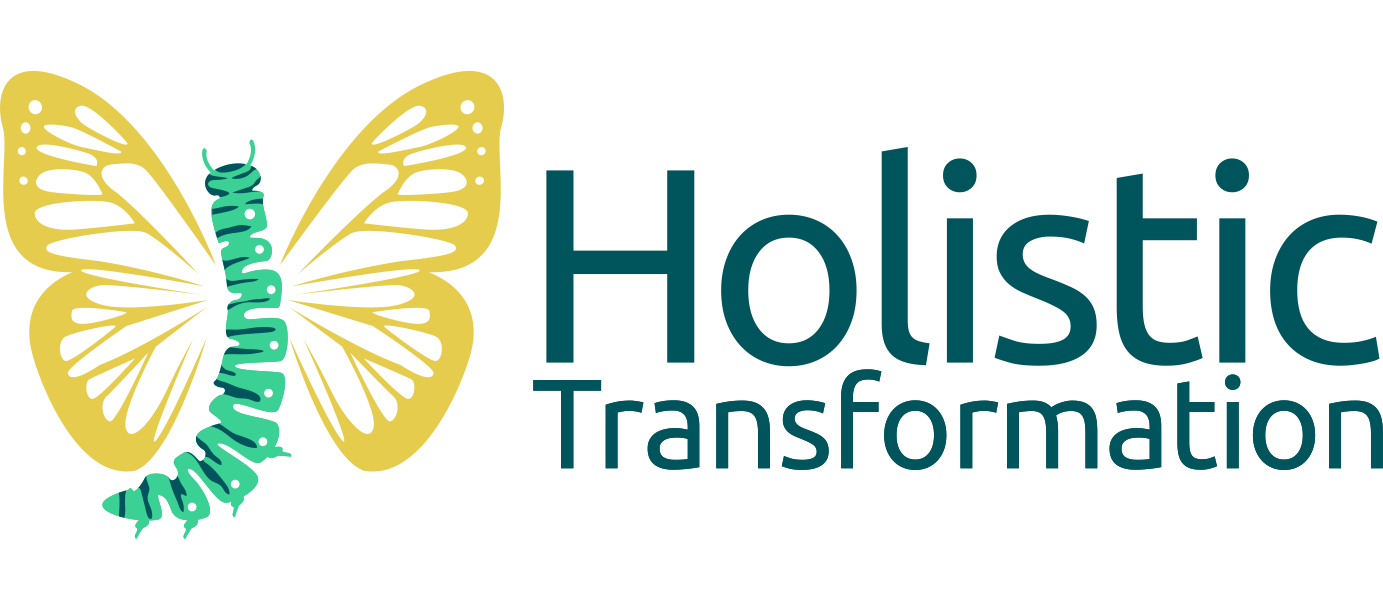Personal coaching, which is the topic of this article, is based on the tenet that people are naturally creative, resourceful and whole. What this means is that they already have the very means within them to come up with viable solutions to their problems. They might just not know it. So, the wisdom doesn’t come from the coach, the coach helps the person to find these means. It is absolutely not the coach that is deciding the topic nor the way forward in a coaching session. And, anything that comes up in the session can be dealt with during the session by the coach and the person being coached, as it opens up alternative ways forward, and we use the whole person and their experience to solve whatever the issue is.
As coaches, we do this by being curious of what is happening in the session and what of it that is important to the person we coach, devoid of judgments and opinions. We use active listening to understand and recognise the persons inner feelings/needs and the context/environment. We create deep awareness of the situation while moving forward towards commitment and success. We open up for being in strong connection with the person we coach and their topic, through presenting judgment, evaluation and our experience. We will then understand what is important to change.
Vertical development
More often than not, the focus of the coaching session is not about small incremental change or transitions, but about evoking a transformation, opening up new capabilities and opportunities for the person. They should be able to do something after the coaching that they weren’t at all able to do before, such as take in the world in a more complex way or be able to handle situations with a fundamentally different approach. We call this vertical development.
To create this transformation, it is extremely important to be truly attentive to the person during the sessions, ask the right powerful questions and give them the tools to really help them on their way. This is done with a few key tricks.
Active listening
The first trick is called active listening. As humans, we usually listen on what is called level 1, internal listening. We interpret what people say and we respond based on our own ego. We focus on what is important to us, in our own context. Level 1 listening can look like this:
– “When playing the game, I really do not feel the happiness as I think I should.”
– “Ah, for me, my favourite game is chess.”
The intention of the person who responds is maybe good and focusing on the other person’s happiness, but the outcome is probably not right.
In level 2, focused listening, you try to build a strong connection with whomever you listen to, being really focused on what that person say, without focusing on your own thoughts. One way of doing this is to force yourself not to think about what to answer until the person has finished talking and you have repeated the words to yourself to really try to understand the underlying meaning.
– “When playing the game, I really do not feel the happiness as I think I should.”
– “I hear you. Hmmm… I’m curious. Could you tell me what does make you feel happiness?”
As an addition, people often speak in paragraphs. So, by you just being silent for a little bit longer, they may very often dig in deeper, explaining both to you and themselves the reasoning behind their statement.
In level 3, global listening, you try to take in everything in the environment when listening to the person, such as tone of voice, posture, noises around you, etc., and using that in your response. Level 3 is level 2 listening plus the environment as well as the intuition of the listener. Try to perceive the emotion, body language, gestures and tones used by the speaker and come up what you think is something underlying in this.
– “When playing the game, I really do not feel the happiness as I think I should.”
– “Interesting. I make up, based on your tone of voice which strikes me as a bit nonchalant, that maybe gaming is the wrong approach to happiness for you. What do you think about that?”
It doesn’t matter if what you come up with is right, as long as it is moving the discussion forward towards a success.
Powerful questions
The second trick is to ask the right questions along the way in the conversation, to invite deeper introspection and move towards insights. These powerful questions are always open-ended. They are not asked with a correct answer in mind. They are intended to send the conversation in the direction of discovery, not to a specific solution. Here are a few examples that I like using.
- What do you really want?
- What’s the worst/best part?
- What else?
- What is important about that?
- What’s the impact on that to you?
- What’s stopping you from X?
- When should you put your foot down?
- What would be an experiment?
- What is another way?
- What would be a totally wrong way?
- What does success look like?
- What would you do if you knew you would succeed?
- What are the steps you need to take?
- What are some things you might start doing?
Ask these questions to see what they really want and need, not to dissect the problem, and the solution will show up on its own.
Designing an alliance
A key way forward, my third trick, in the coaching session is to design an alliance, to create a fruitful environment. For instance, we, the participants in the session, decide our way of working around how and when to give feedback, understanding what is valuable to the other person, and when we have reached a point of enough. There are many ways of doing this, but a good start is to prepare some working agreements on your own, based on what you know about yourself in these situations. It can sound like this.
“I want to be completely useful to you. To be that, it is good that you know that I might sound a bit angry sometimes, it is usually just because I’m very curious and impatient when trying to understand the other person. Please tell me if I does sound like that, so that I can stop. I can also be a bit pushy, maybe cutting you off sometimes. Do tell me when I do that as well. Is there a way you want me to be to be able to help you better?”
Or like this:
“This conversation is for you. What works for you in these situations? I’ll check in with you during the session to see how it is going, okay?”
Commit to action
The intention of this coaching session is not that the coach should be the one actually removing barriers or taking the steps forward for the person’s development. This will only happen if the person is willing to commit to action themselves. As a coach, you would need to guide them along those paths though. This is the fourth trick.
First, you can either ask what steps would be needed to get towards the goal or simply offer them a suggestion. For instance:
I want to offer you a challenge. Do X. What do you think about that?
Secondly, there needs to be some sort of accountability. Asking the person for their specific actions and asking how they will report the outcome of these actions helps creating that accountability. For instance:
- What will you do?
- When do you think that you are done / can see a result?
- Would you check in with me when you’re done?
- Would it be useful for you to let me know how this is going in a week?
Acknowledgment
Lastly, number five, when they have committed to an action, positive confirmation of the session and the plan forward supports them in actually following through. For instance:
- I acknowledge that you take this direction
- Good for you!
- You are already doing very well!
The Coaching arc
Putting all of this together, for one session, may be trick number six, but who’s keeping count? Seeing this as an arc or a tube that expands in the middle, can help visualising the session’s agenda.
The sessions starts with designing the alliance, and then asking the first powerful question which is “What is your topic?”. After that, we enter exploration space in which we both try to understand the topic deeply and try to narrow down to specific actions to take, both through using powerful questions based on what the person have said and done (active listening 2 and 3) before. We end by committing to an action and acknowledging that action and the progress in the session.

That’s it, that’s Personal Coaching 101. Congratulations for finishing this class. What will you do now? And when will you check in with me to report your progress? 😉
Addendum: The Mentoring arc
The difference between coaching and mentoring is often gigantic, but in essence the only difference is if you are offering advice or not. You could start the session with coaching (what is your topic?) but add if it would be okay to offer advice (or at least open up for the possibility to ask if it is okay) during the session when designing the alliance. Then, during the exploration,
- Can I make a suggestion?
- Would you be open for my view/knowledge of this?
- Can I share my experience?
- Can I draw you a picture?
And be brief with your explanations. It is still about the person you are mentoring, not about you.
To put the reins back into the hands of the person, you can follow up a little later with questions like:
- What do you think about that?
- Where are we now in the conversation?
- Are we on the right track?
- Anything else you take away with this?
- Forget what I said, what will you do?
- My idea does not matter if it doesn’t take you anywhere. How is it going for you?
- This is your process. What steps will you take?
In short, focus on getting back to the commitment to action and acknowledgment in the same way as if you were coaching. To summarise this in a picture:

If you have tricks on your own when coaching, or comments in general about this article – please write a comment or two below.



Leave a Reply
Want to join the discussion?Feel free to contribute!